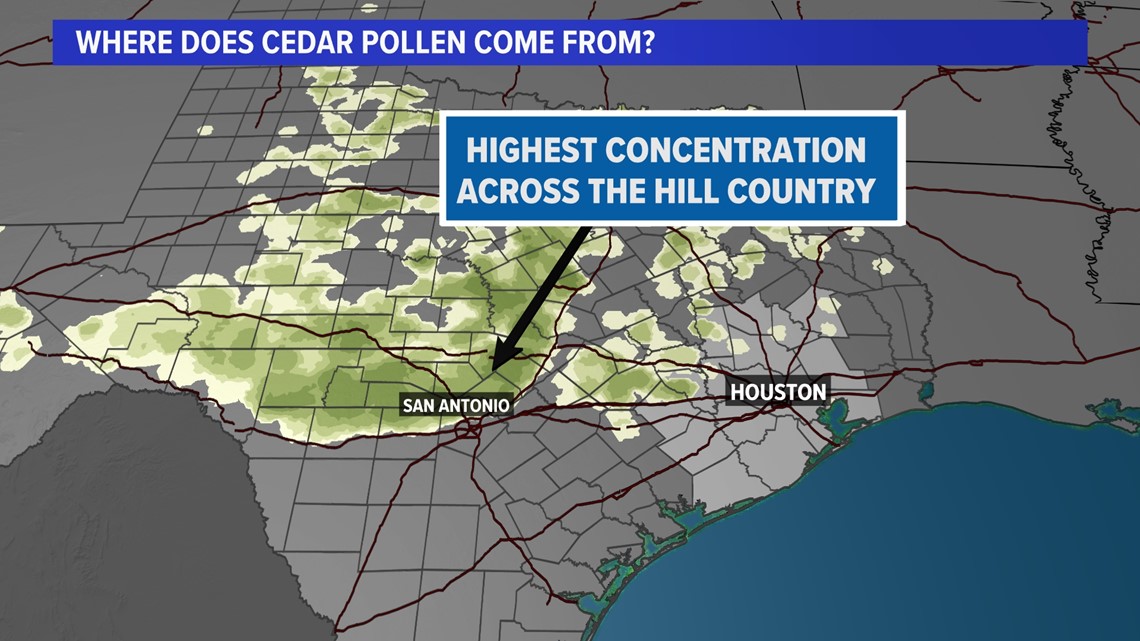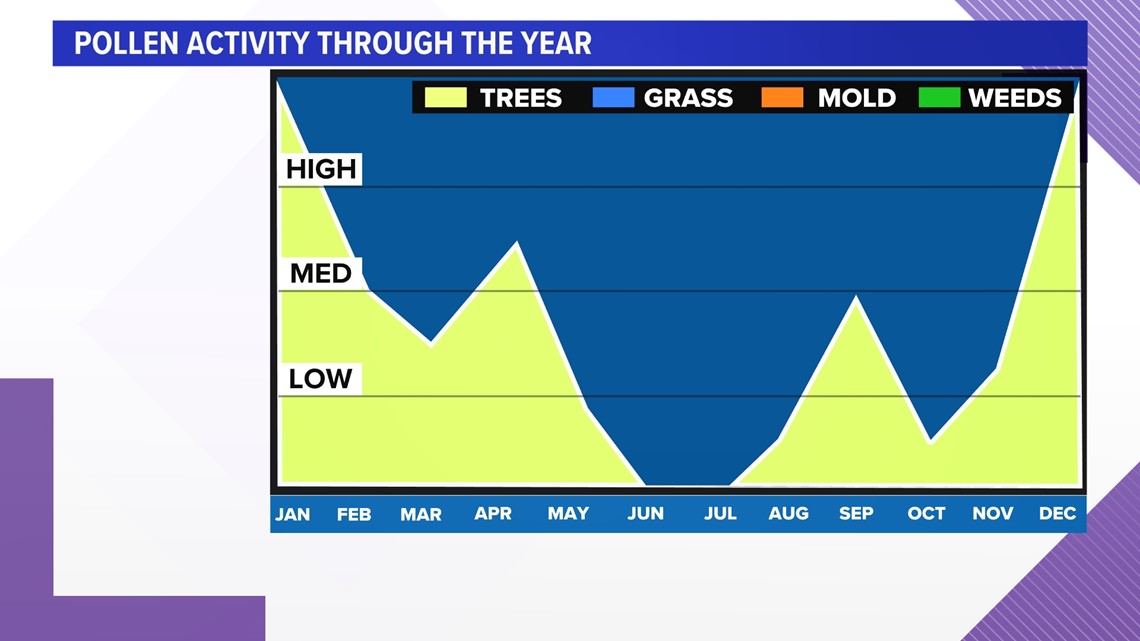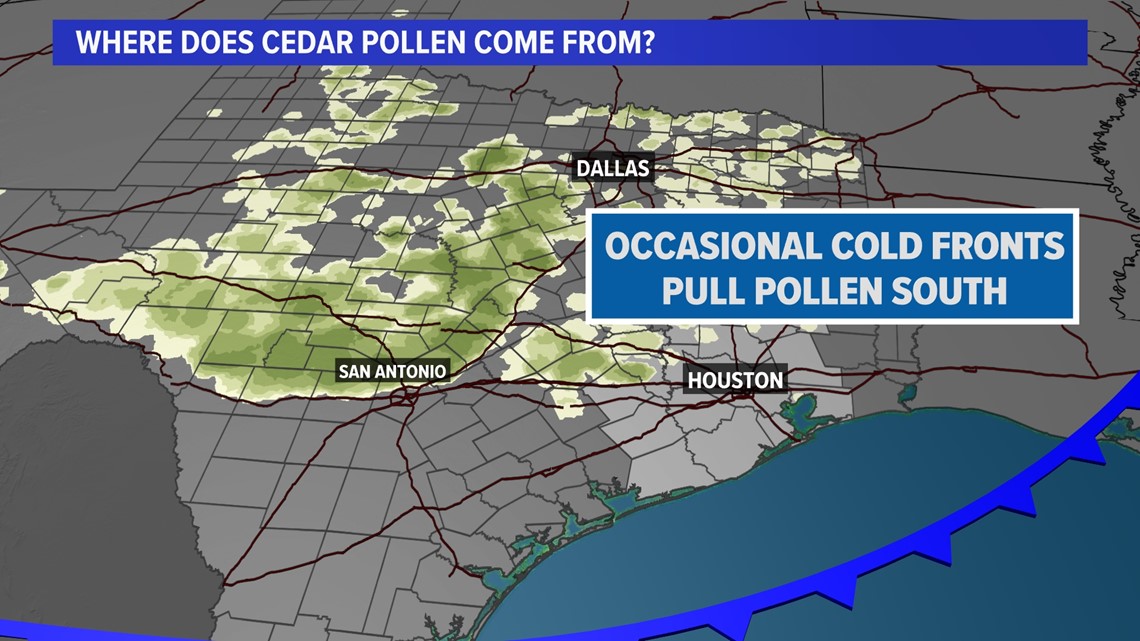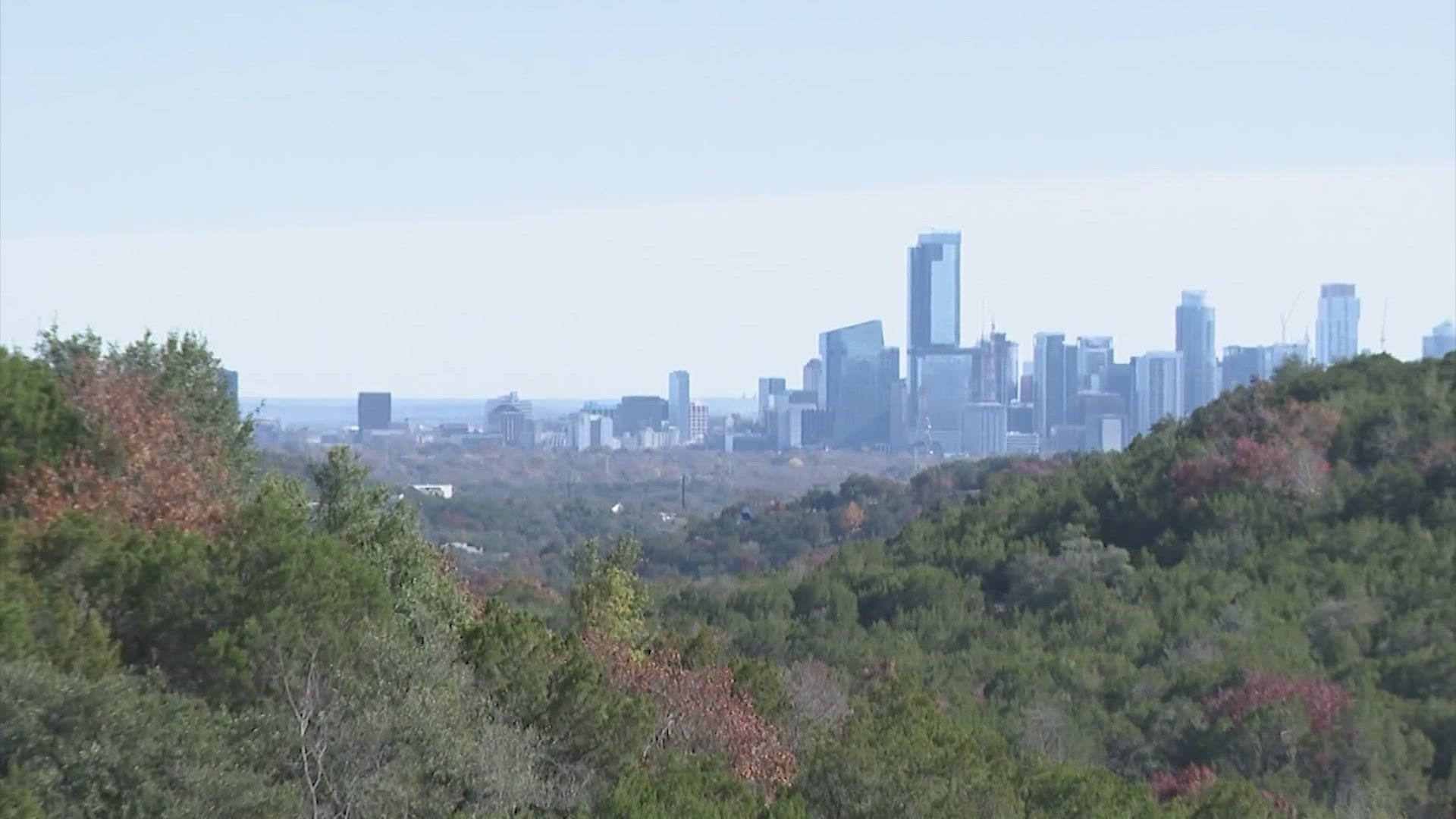HOUSTON — It's the season for sneezin' across Central Texas, as mountain cedar levels begin to spike. But why do pollen levels in Central Texas matter to Southeast Texas? It has to do with the wind. This time of year, cedar pollen begins to explode across the Hill Country. In fact, on the final day of 2023, mountain cedar levels surged to the highest point so far this season. The 24-hour rolling average cedar count eclipsed 18,000 grains per cubic meter on Sunday afternoon. This is over 16 times more cedar in the air than at the previous highest point this season on Dec. 19, 2023.


This time of year marks the typical point when cedar pollen levels start to increase across the state. Typically, these pollen levels will peak during January, and gradually decrease into the spring.


As cedar pollen concentrations build across Central Texas, it becomes a reservoir for this sneeze- inducing particulate until winds blow it to other parts of the state. Unfortunately for us in Southeast Texas, the north wind that so often brings us cool and dry days in the winter, also helps to transport this pollen toward the upper Texas coast. Most often, this happens behind a cold front or storm system.


As the front passes through the area, it brings much of the airborne pollen with it, pulling it in our direction.


As long as winds remain from the northwest, pollen will keep getting blown into our area, leading to high concentrations and aggravated allergies. This week, there are several days when the wind is forecasted to be from the northwest. Thankfully, several opportunities for rain are also expected which is one thing that can help temporarily lower our cedar levels. Bottom line, if you haven't already, now would be a good time to start taking those allergy pills.

